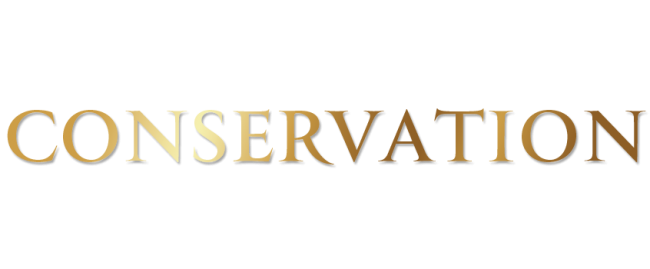
Your stay helps look after animals in our care…
EXOTIC SPECIES CONSERVATION IN THE WILD
Wildlife collections have a very important part to play in the conservation of the species they hold. This can be through captive breeding programmes, where individual animals are moved between zoos and safari parks so that the best breeding pairs can be set up to maintain lots of wild type genetic diversity in the captive populations. Captive animal collections can also help species in the wild by raising the profile of their species and by directing funds to on the ground conservation projects and programmes. Here at the Park, we’re trying to assist the conservation of every species you see from a Lodge.
CHEETAH CONSERVATION
Cheetah were once found through much of Asia and Africa, but are believed to remain in only 10% of their historic range, with conflicts with humans being one of the major threats to them. We have supported an innovative programme developed by The Cheetah Outreach Trust.
They give farmers specially bred and trained ‘livestock guarding dogs’ (LGD), which live with herd animals to prevent predation of the livestock.
This way, the farmers are less likely to feel the need to shoot or poison cheetah on their land. You can find out about this programme and even how to sponsor a LGD: Click Here.
AFRICAN ELEPHANT CONSERVATION
Around 90% of African elephants have been wiped out in the past century. Poaching (illegal hunting) for ivory was a major historic cause, but now an equal threat is the loss of habitat caused by ongoing human population expansion.
There are many conservation projects underway to help wild elephants. We support the Mali Elephant Project (MEP) through the UK conservation charity, TUSK. Mali has a small, isolated population of rare desert elephants. In 2017, it was estimated that if poaching was not reduced, the entire population could be wiped out by 2021.
MEP helps local people to stand up to international poaching networks and protect this unique herd. You can give to the MEP here: Click Here.
RED PANDA CONSERVATION
In 2015, the IUCN (a conservation authority) stated that the red panda was classed as Endangered, because it was estimated that its population had likely declined by 50% over the preceding three generations.
Human encroachment is a major factor driving the decline in red panda populations. Humans are cutting down forests for logging, clearing forests for farming, herding with dogs and also poaching.
West Midlands Safari Park is supporting the Red Panda Network (RPN). RPN is committed to the conservation of wild red pandas and their habitat through the education and empowerment of local communities.
You can make a donation to them: Click Here.
WHITE RHINO CONSERVATION
White rhino recovered from near extinction in the early 1900s, when numbers were as low as 50 – 100 in the wild. Now the wild population of southern white rhino is estimated at over 17,000 in total, with 10,000 mature individuals. However, it looks like populations are decreasing again, as the new wave of poaching takes its toll.
Save the Rhino International is a charity which helps out rhino conservation programmes all over Asia and Africa. WMSP assists them with a project in the South African uMkhuze Game Reserve. The team carry out constant surveillance and anti-poaching activities to protect the Park’s populations of white and black rhino.
You can donate to Save the Rhino International: Click Here.
GIRAFFE CONSERVATION
The conservation authority, International Union for Conservation of Nature (IUCN), recognises one species of giraffe (Giraffa camelopardalis), which is classed as ‘vulnerable’, meaning it is at some risk of complete wild extinction. Total numbers of giraffe in the wild have decreased almost 30% since the 1980s.
The Giraffe Conservation Foundation (GCF) focuses on the conservation and management of giraffes in the wild. GCF use science to guide their work and contribute to numerous projects which protect the giraffe throughout Africa. Conservation work has resulted in recent increases in numbers between 2015 and 2021. So hopefully the decades-long decline is beginning to be reversed.
You can help GCF by donating: Click Here.
SUMATRAN TIGER CONSERVATION
Sumatran tigers are a variety of the endangered species – the tiger (Panthera tigris). There are only around 400 Sumatran tigers left in the wild. Tigers are illegally hunted because their bones and skins fetch large sums of money on the black market. In Indonesia, where Sumatra is located, much of the rainforest has been converted to agricultural land, resulting in a vast reduction in available tiger habitat.
WildCats Conservation Alliance is on a mission to save wild tigers and Amur leopards. WMSP supports one of their Sumatran tiger programmes – the Kerinci Seblat Tiger Protection Project. This programme aims to increase the Sumatran tiger population in the Kerinci Seblat National Park, one of the strongholds for these highly threatened animals.
LION CONSERVATION
Major causes of the decline are habitat disappearance, a reduction in lion prey species and an increase in human-lion conflict. People are frightened that lions are dangerous to them and to their farm animals, so they kill lions to keep themselves safe. The number of lions being poached for use in traditional medicine is also becoming a concern.
HIPPO CONSERVATION
Overall, the wild common hippo population is stable but there are some very small and declining subpopulations in many countries across its range. Hippos rely on large areas of fresh water and these are disappearing or being used excessively by growing human populations.
Hippos are hunted for both their meat and also their teeth which are traded as ivory, like elephant tusks. There are lots of protected areas in Africa where hippos should be safe from habitat loss and hunting, but only some of these are regulated.
HOMES FOR OUR ANIMALS
The Safari Lodges development is centred around upgrading our animal facilities, in creating stimulating and enriching environments. The new habitats are designed to allow further expression of their natural behaviours and staying in our lodges will help fund future improvements for more of the Park’s amazing animals.
For example, in our new elephant valley, there are outdoor pools, mud wallows and multiple feeding areas. The new cheetah facility has plenty of cover to make the cats feel safe and high points, as they like to be able to view their surroundings from vantage points.
NATIVE WILDLIFE
Our lodge developments have been designed with native species conservation in mind. Care was taken during the development not to harm some of the beautiful, mature trees in the area.
Additional trees and wildflower seeds were planted around the lodges, and as they grow, we hope they will attract more native species to West Midlands Safari Park.
The UK has lost over 97% of its wildflower meadows since the 1930s, so replanting native wildflowers is very important.
SUSTAINABILITY
REGISTER FOR THE LATEST UPDATES AND BOOKING EXCLUSIVES
Be the first to know all the latest details & availability!







